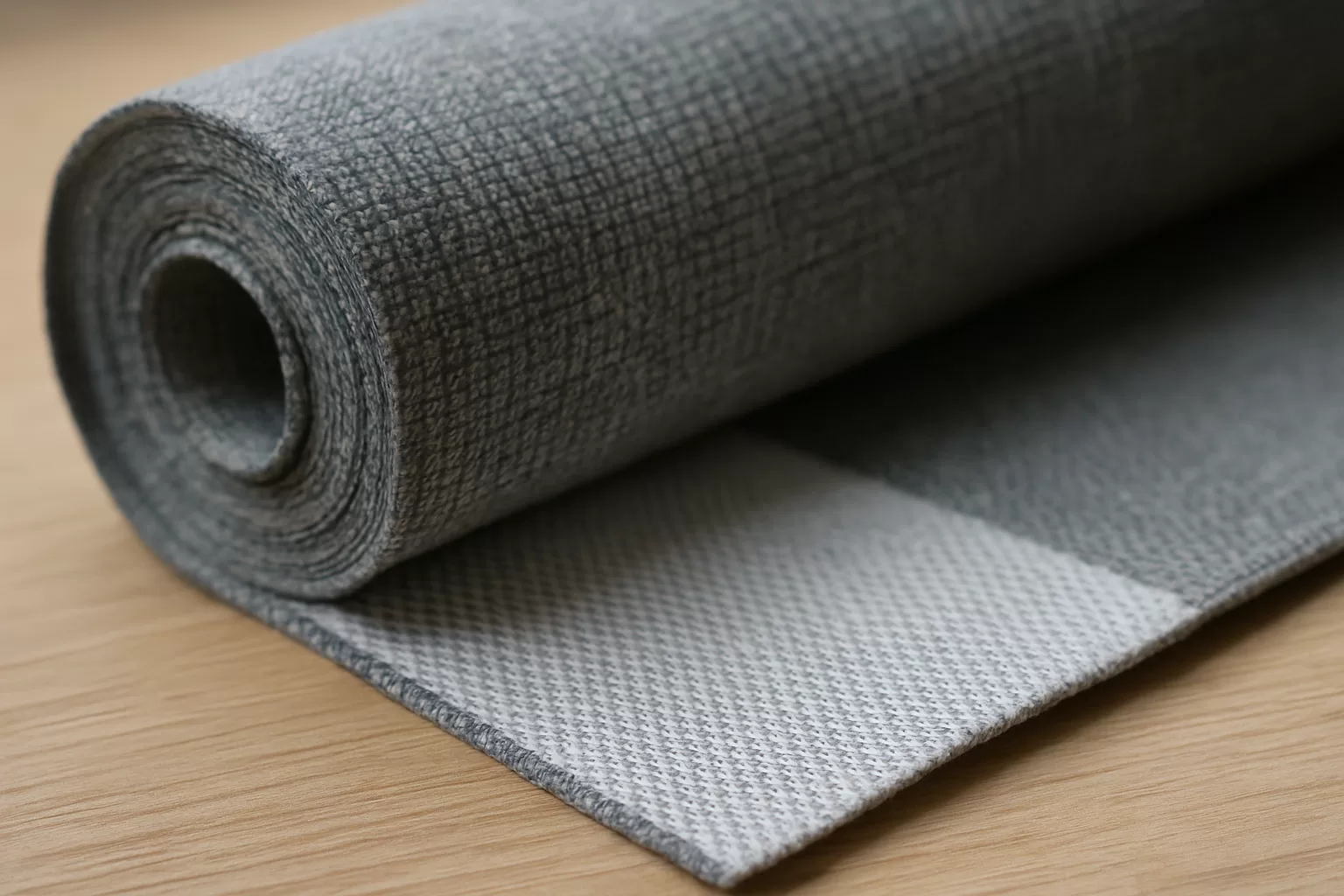In the world of commercial design, fabric choice is more than a matter of style—it’s a matter of strength. While colors and textures steal the spotlight, it’s the invisible reinforcements beneath the surface that determine how well a textile will perform in demanding environments. That’s where knit backing comes in.
For anyone working in furniture manufacturing, interior design, or commercial textile sourcing, knit backing isn’t a luxury—it’s a necessity. From stretched seating and tight-wrapped panels to wallcoverings that must endure wear and resist fray, knit backing is the structural upgrade that turns ordinary fabric into high-performance material.
Let’s take a closer look at what it is, why it matters, and how it transforms your fabric’s longevity and workability without altering the visual appeal.
What Is Knit Backing?
Knit backing is a textile finishing process where a lightweight knit fabric—usually made of polyester—is laminated to the back of a face fabric (typically woven or decorative) to improve its dimensional stability and resistance to tearing, fraying, or stretching.
It’s an invisible layer of support that doesn’t change the look or feel of the fabric but ensures it performs under stress—particularly in applications that involve stapling, stretching, or tension-based installation like upholstery and wallcoverings.
Why Is Knit Backing Important in Commercial Interiors?
In high-use commercial environments like hospitality, education, and healthcare, fabrics don’t just need to look good—they need to stand up to real-world conditions:
-
Repeated cleaning
-
High-traffic wear
-
Pulling, stapling, or stretching
-
Precision pattern alignment
-
Fabrication under time constraints
Without reinforcement, many decorative fabrics simply can’t hold up. Knit backing preserves design intent while quietly boosting performance behind the scenes.
Key Benefits of Knit Backing for Commercial Applications
1. Improved Dimensional Stability
Unbacked fabrics often shift or stretch when cut, sewn, or applied to curved surfaces. Knit backing locks the weave in place and ensures pattern consistency.
2. Reduced Fraying and Tearing
Lightweight or vintage fabrics can tear easily during fabrication. Knit backing prevents rips and maintains fabric integrity through cutting, sewing, and installation.
3. Greater Yield and Usability
Knit-backed fabrics are easier to work with on-site or in production, reducing waste from miscuts or unraveling edges.
4. Enhanced Workability on Complex Shapes
Whether wrapping around tight chair corners or radius wall panels, backed fabrics bend and stretch cleanly without distortion.
5. Preservation of Texture and Drape
Unlike stiff backings (like latex), knit backing is flexible, allowing the fabric’s natural drape and softness to remain intact.
Upholstery Applications That Require Knit Backing
You’ll find knit-backed fabrics in almost every part of the commercial interior landscape. Here’s where they’re most critical:
-
Banquette seating in restaurants
-
Hotel lounge chairs and ottomans
-
Office side chairs and reception seating
-
Healthcare waiting room furniture
-
Custom booth upholstery in entertainment venues
-
Theater or auditorium panel wrapping
In all these cases, knit backing enables the fabric to stretch evenly, hold its shape, and endure years of use.
Wallcovering and Wrapped Panel Applications
Beyond seating, knit backing is essential in vertical applications where fabrics are used on:
-
Acoustic panels
-
Wrapped architectural features
-
Wall-to-wall textile panels
-
Framed installations
-
Elevator walls or lobbies
Without backing, most decorative fabrics are too fragile to adhere smoothly to rigid panels without puckering, sagging, or separating.
When Should You Choose Knit Backing?
If your fabric is:
-
Lightweight, open-weave, or delicate
-
Vintage or handwoven
-
Likely to be stretched, stapled, or glued
-
Being used in high-traffic or code-sensitive environments
…then knit backing is highly recommended—or even mandatory.
It’s especially important when using premium fabrics in a commercial context. What works in a residential armchair may fail under the daily demands of a hotel lobby.
Can You Add Knit Backing After Purchasing Fabric?
Yes—and that’s where SBI Finishing comes in.
We work with clients who’ve already sourced their fabric and need to make it commercially viable. Our knit backing process is:
-
Fast
-
Precise
-
Non-disruptive to the fabric appearance
-
Compatible with a wide range of textiles
This gives designers and manufacturers the flexibility to use unique or decorative fabrics that otherwise wouldn’t hold up in commercial use.
Our Process at SBI Finishing
Every fabric is different. That’s why we approach each backing job with attention to detail and quality control:
-
Fabric Assessment – We examine fiber content, thickness, and weave to determine compatibility.
-
Custom Lamination – We apply the knit layer using heat-activated adhesive, calibrated to the fabric’s tolerance.
-
Quality Check – Backed fabric is inspected for consistency, alignment, and bond strength.
-
Rolled, Packed, and Delivered – Shipped back to you ready for fabrication.
Need a small run for a boutique install? Or a large batch for manufacturing? We scale to your needs—fast.
Why Work With SBI?
For decades, we’ve partnered with furniture makers, interior designers, mill representatives, and commercial specifiers to prepare fabrics for real-world application. Our knit backing process:
-
Protects investment in specialty fabrics
-
Helps projects pass punch lists and inspections
-
Saves time during fabrication and installation
-
Reduces waste and rework
And because we also offer flame retardant treatments, antimicrobial finishes, and more, we can combine services for efficient production.
Performance You Can’t See—But Always Feel
When the chair holds its shape year after year…
When the wall panel stays tight and clean…
When the fabric never frays or misaligns…
That’s the silent success of knit backing.
It’s not just a technical finish—it’s the foundation of durability. In commercial interiors, performance and precision matter. Knit backing ensures both.
📦 Place your order with us at orders.sbifinishing.com/order
or call us at 903-675-1440.

